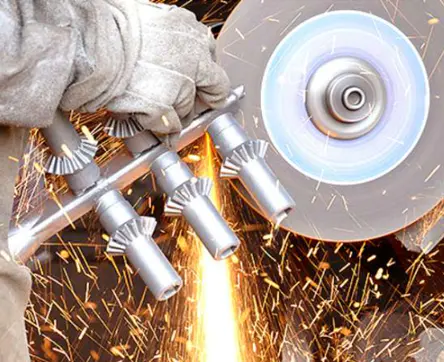INVESTMENT CASTING (LOST WAX CASTING) PROCESS
The investment casting process is an economical way to produce metallic parts with excellent dimensional precision and surface finishing, reducing or virtually eliminating extra machining operations. It is one of the oldest known foundry process. Archeological evidences in different areas of the planet indicate that investment casting process started in the Bronze Age, around 4,000 years BC. It is an industrial process with refined and rigorous control systems for each of the eight following manufacturing step.
This first step consists in a creation of a heat disposable pattern made by the injection of wax into a mold (metal die.)
The wax patterns generally have the same basic geometrical shape as the intended finished cast part. The wax injection process forms some burrs in the pattern and it is necessary to remove them carefully. Even the small almost unperceivable particles that do not belong to the final part are removed in this process.
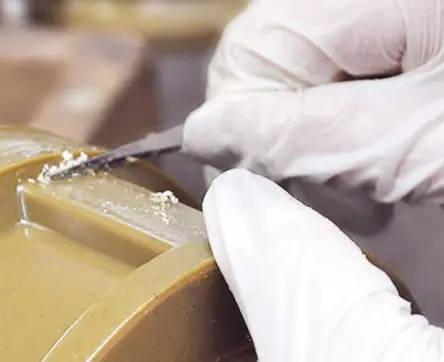
After deburring, the wax patterns are, via a thermal process, assembled onto a runner (alsowax-injected made) in order to form a casting tree.
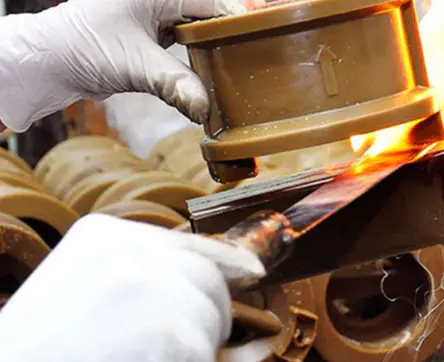
Successive layers of special slurry ceramic refractory materials are apply to the tree with strict control of temperature and humidity.
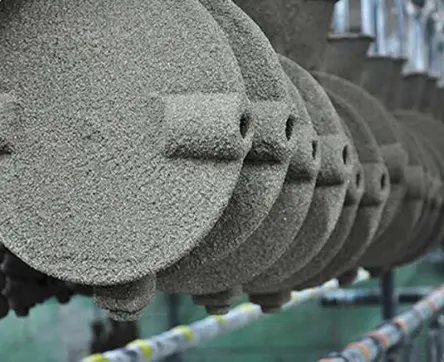
Once a ceramic layer is ready and dried, the entire tree is placed in an autoclave system to remove most of the wax by means of steam pressure in order to remain only the ceramic shell molds. All spaces previously filled with the wax, are now empty
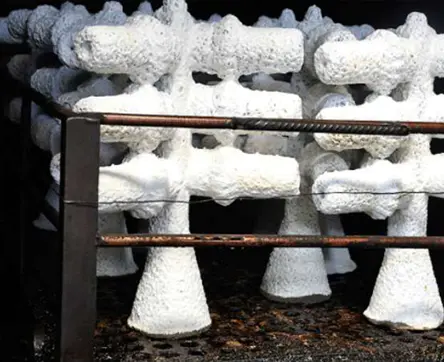
To achieve higher mechanical strength and thermal shock resistance, the shell molds empty trees are placed into a furnace in a high temperature of approximately 1,100 C. (2,000 F).
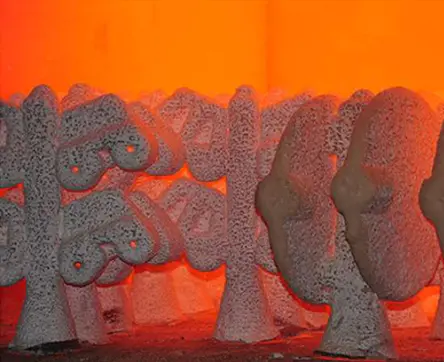
After calcination process, the ceramic shell molds are carefully filled with liquid metal, which by gravity flows into all internal mold, forming the rough workpieces, all attached to the sprue.
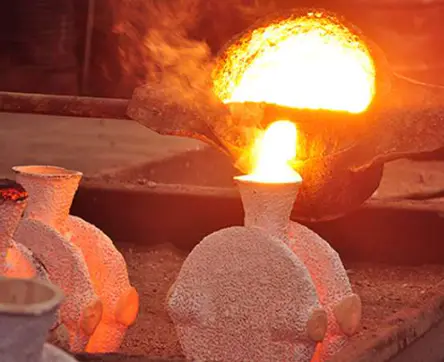
The rough workpieces are then cut off from the tress, receive specific finishing (grinding, straightening, heat treatment, machining, engraving, etc.), and, after that, go to a strict final quality inspection before packaging and shipping to the costumer.
